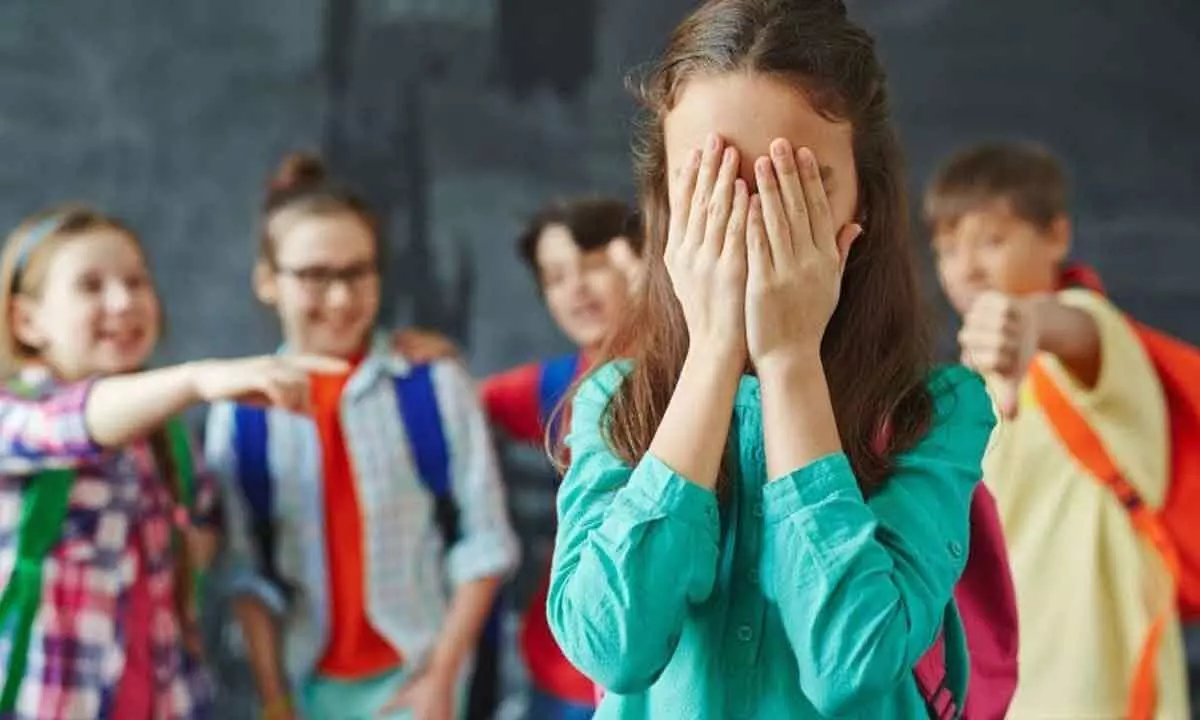How can schools help deal with bullies?

The term brings to mind the image of a helpless victim, an insurmountable perpetrator and a bunch of seemingly helpless onlookers. When placed in the context of a school, the image is bound to receive a sharp intake of breath reaction from the readers.
Bullying- The term brings to mind the image of a helpless victim, an insurmountable perpetrator and a bunch of seemingly helpless onlookers. When placed in the context of a school, the image is bound to receive a sharp intake of breath reaction from the readers.
Bullying, people might argue, is a covert phenomenon, with at least one party being easily identifiable. But in a school setting, various preconceptions about students prevent the identification as such. The person who seems to be the social king may turn out to be a victim, and the child who appears to be a scared victim may actually be a witness to the scene, now threatened by the bully. While physical bullying is sure to happen in places where authoritative figures cannot reach, cyber ( involving the use of social media), social (negatively affecting someone's reputation and social connections) and verbal (using words to belittle or admonish a person) bullying are much more difficult to identify and prevent.
All parties in the scenario are affected lifelong if it goes unnoticed – any of the three have the potential to remain or become a bully, be clinically depressed due to their inability to change or rectify what happened in the past etched with a helpless feeling or manifest absenteeism to avoid the problem at hand. Substance abuse is one of the various measures that children, especially witnesses of bullying, turn to for comfort and escape from the terrifying reality.
In order to prevent or resolve issues even remotely connected to the act of bullying, it is important to consider the people involved, their circumstances, dispositions and mindsets to understand the why of the situation and the best way to resolve the situation.
The first and foremost rule is not to consider it a child's play – it is not a let us forgive each other because that is what good people do situation. It is a you should feel the gravity of the situation scenario. How the bully became such and how the situation escalated to such an extent is for the school authorities to investigate and understand. A conversation with all the people involved, including the parents, is the way to go, rather than an interrogation with the students involved. Coming to a conclusion regarding the consequences of the actions of all the parties involved depends upon a lot of factors – some being the environmental factors which lead to the situation, the previous involvement in similar situations, and the part other people played in the scenario and the likes.
While it is true that prevention is better than cure, only the right measures can lead to the prevention of acts which are much more complex than a simple action-reaction framework.
First and foremost, a positive and conducive environment, like a healthy immune system should be ensured in order to create a safe space for the students and the teachers (sometimes the victims and perpetrators can also be teachers, but that is a different discussion altogether). A positive environment provides a heartfelt sense of safety and keeps cases of bullying to a minimum as the environment itself becomes a support system.
Social and emotional learning, which involves training in self-awareness, self-management, social awareness, mindful decision making and relationship management, can aid the students in determining where things are going wrong and also being vocal about the difficulties they are facing, reducing bullying and other bouts of aggressive and hostile behaviours.
Emotional intelligence leads to understanding the nuances of the self, which leads to heightened awareness of one's social and mental processes, thus reducing maladaptive defense mechanisms. Training teachers in the same can lead to the elimination of prejudices and preconceptions educators hold when dealing with situations like bullying.
Vigilance and timely resolution of the situation by involving the parents in a necessary capacity, arranging workshops to educate students on the same, addressing and identifying the specifics of each situation and understanding that each case of bullying is different can go a long way in dealing with bullying.
(The author is the Principal,
Orchids The International School, Magadi Road)




















